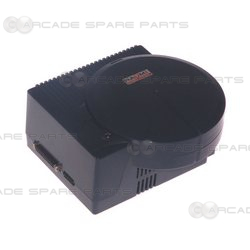
GD-ROM was created because the standard CD-ROM was prone to piracy and reaching the limits of its storage capacity, while implementing the then brand-new DVD-ROM technology would have made console production too costly. The format was developed for Sega by Yamaha, and first commercially appeared with the Dreamcast's Japanese launch in November 1998. The last disc-based Naomi 2 and Triforce games were released in 2006 which marked the final releases using the GD-ROM format. With the release of the Sega Lindbergh in 2005, Sega moved on to DVD discs and continued to use satellite and internet technology in the arcade. In addition, GD-ROM proved to be an ineffective anti-piracy measure when it was discovered the Dreamcast's forgotten MIL-CD functionality could be exploited to boot games burned to CD albeit with some content removed.Īfter the discontinuation of the Dreamcast worldwide on March 31, 2001, Sega continued to use the GD-ROM format in arcades with the Sega NAOMI 2, Triforce and Sega Chihiro. The Dreamcast ended up being the only sixth-generation console with a disc based on CD technology rather than DVD technology even the Nintendo GameCube's smaller 8 cm discs held 50% more data due to being based on DVD technology. It is similar to the standard CD-ROM except that the pits on the disc are packed more closely together, resulting in a higher storage capacity of 1 gigabyte, a 42% increase over a conventional CD's capacity of 700 megabytes. It was developed by Yamaha to curb piracy common to standard compact discs and to offer increased storage capacity without the expense of the fledgling DVD-ROM. GD-ROM (an abbreviation of " Gigabyte Disc Read-Only Memory") is a proprietary optical disc format originally used for the Dreamcast video game console, as well as its arcade counterpart, the Sega NAOMI and select Triforce arcade board titles.

Proprietary optical disc format used in the Dreamcast video game console

Add to that the dirt and smoke a game has to put up with on location vs. These storage devices simply could not withstand the constant on/off cycling a coin-op application demands. with great success in increased content but at a tremendous cost in realiablity. Many have been using off-board storage devices for years - hard drives, CD's, etc. From Sega R+D - "We learned a lesson watching our coin-op competitors go through hardware hell. This does two things, 1) Eliminates loading delays completely, (after initial power up.) 2) Minimizes the on/off cycles of the GD ROM drive and greatly increasing the life of this mechanical device. Once this is completed, the GD ROM goes into standby unless the RAM gets corupted or the game gets shut off for 72 hours or more. When the game is initially installed, the GD ROM loads its content into the Naomi RAM. The GD Rom system has a very clever way of getting around the loading delay time.
SEGA NAOMI GD ROM PC
RAM board Uses normal PC type DIMM's, so upgrading memory is not a problem, and relativly cheap. It comes with a DIMM board, very similar to the ROM board on a normal NAOMI cartridge, but has RAM instead of ROMS.
SEGA NAOMI GD ROM UPGRADE
TECHNICAL The GD-ROM upgrade is compatible with Naomi and Naomi 2 via the option port on the top of the board.


Arcade System published 22 years ago: NAOMI GD-ROM System © 2000 Sega Enterprises, Limited.


 0 kommentar(er)
0 kommentar(er)
